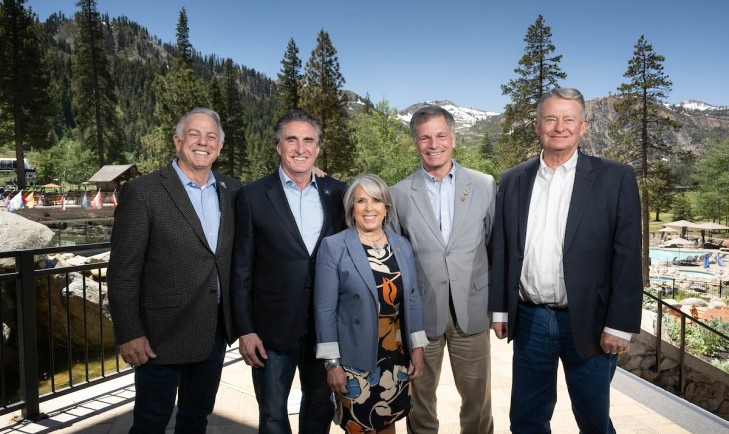
WGA’s 2024 Annual Meeting in Olympic Valley, California was teeming with headline-worthy news.
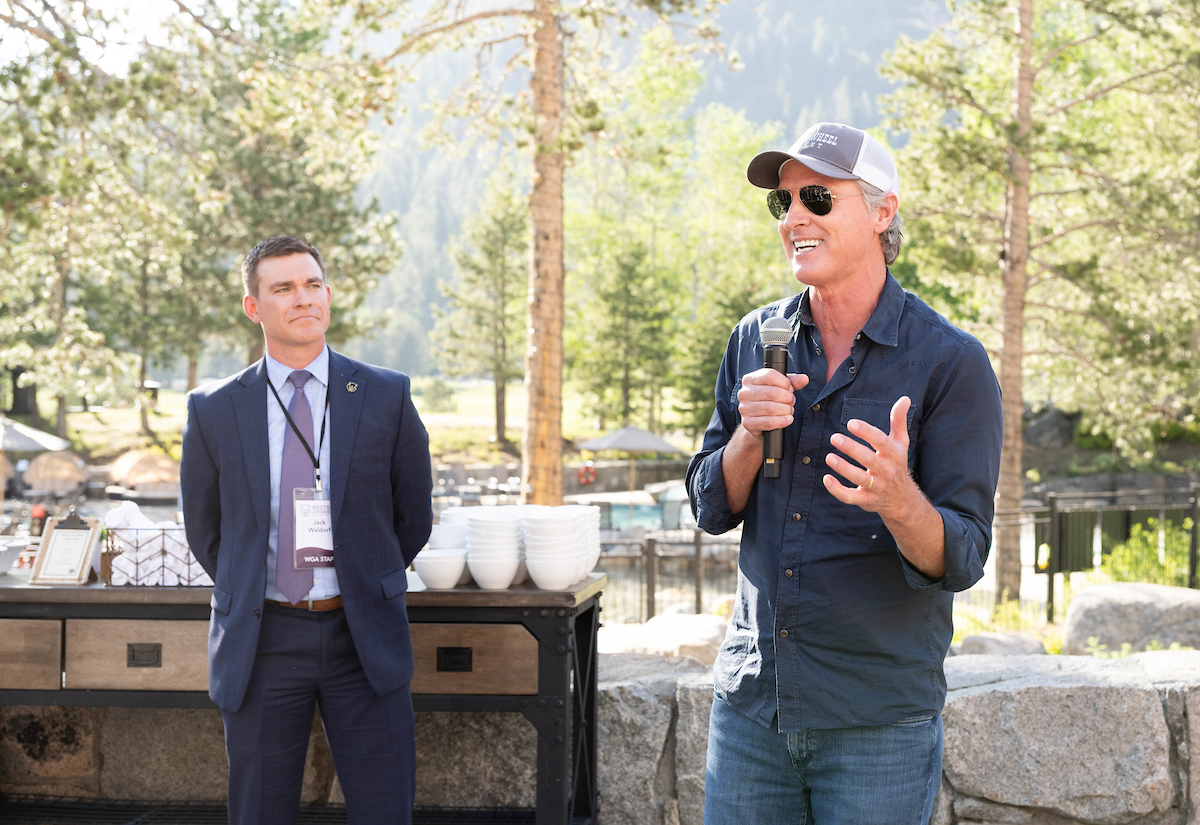 Following WGA's 40th anniversary celebration, during which California Governor Gavin Newsom welcomed his fellow Western Governors to Olympic Valley, California, WGA’s Chair Wyoming Governor Mark Gordon kicked off the Association's two-day Annual meeting by announcing the release of the Decarbonizing the West initiative report.
Following WGA's 40th anniversary celebration, during which California Governor Gavin Newsom welcomed his fellow Western Governors to Olympic Valley, California, WGA’s Chair Wyoming Governor Mark Gordon kicked off the Association's two-day Annual meeting by announcing the release of the Decarbonizing the West initiative report.
The culmination of his WGA Chair initiative, the report outlines several policy recommendations for advancing carbon capture, utilization, and storage technologies, as well as maximizing the region’s capacity for natural carbon sequestration through enhanced land and agricultural management practices.
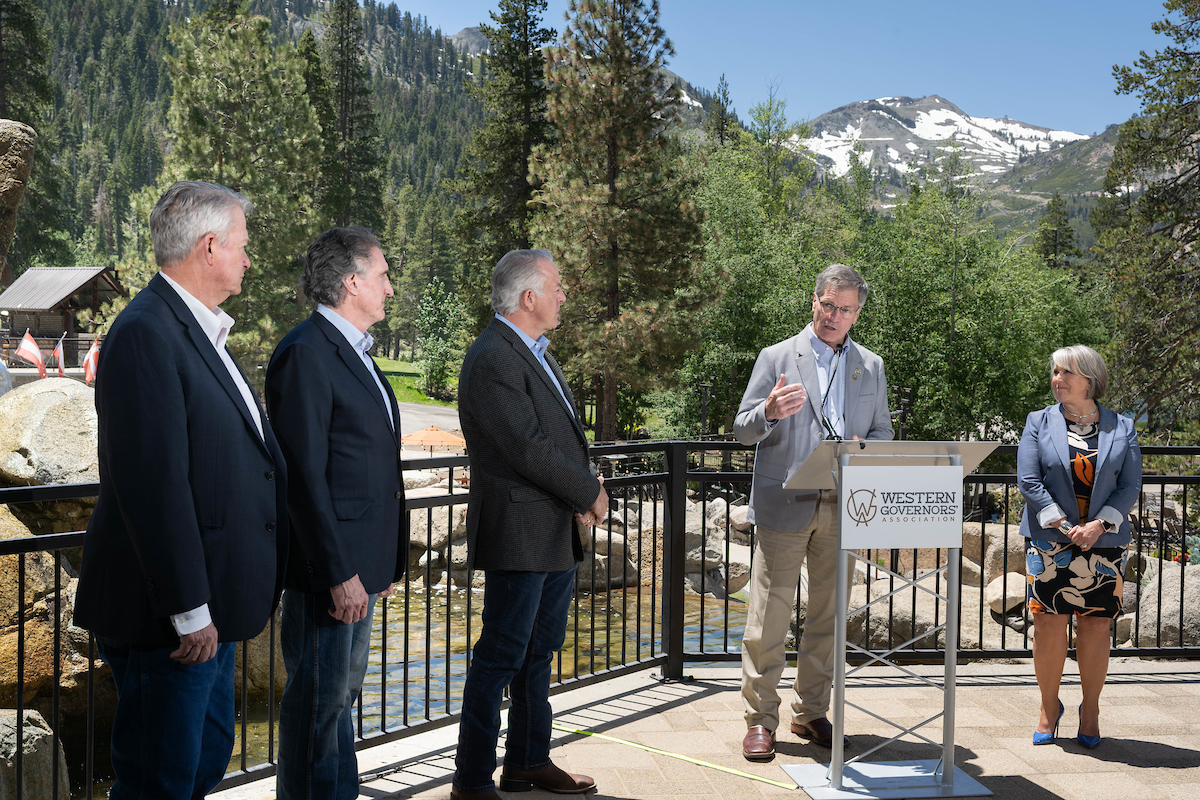 “I am very happy to say today America has demonstrated yet again that innovation will trump regulation and that we can move forward in a future which is beneficial to all of us,” Governor Gordon said. “If we can continue to work together, there is so much that we can accomplish.”
“I am very happy to say today America has demonstrated yet again that innovation will trump regulation and that we can move forward in a future which is beneficial to all of us,” Governor Gordon said. “If we can continue to work together, there is so much that we can accomplish.”
He and the other four Western Governors attending the meeting -- New Mexico Governor Michelle Lujan Grisham, Idaho Governor Brad Little, Nevada Governor Joe Lombardo, and North Dakota Governor Doug Burgum -- also announced the adoption of five policy resolutions regarding water quality, water resource management, cleaning up abandoned hardrock mines, transportation infrastructure, and disaster preparedness and response.
The meeting’s first keynote address featured Deputy Secretary of Agriculture Xochitl Torres Small who signed a Memorandum of Understanding (MOU) with Western Governors, expanding the scope of a previous shared stewardship MOU that the USDA signed with WGA in 2018.
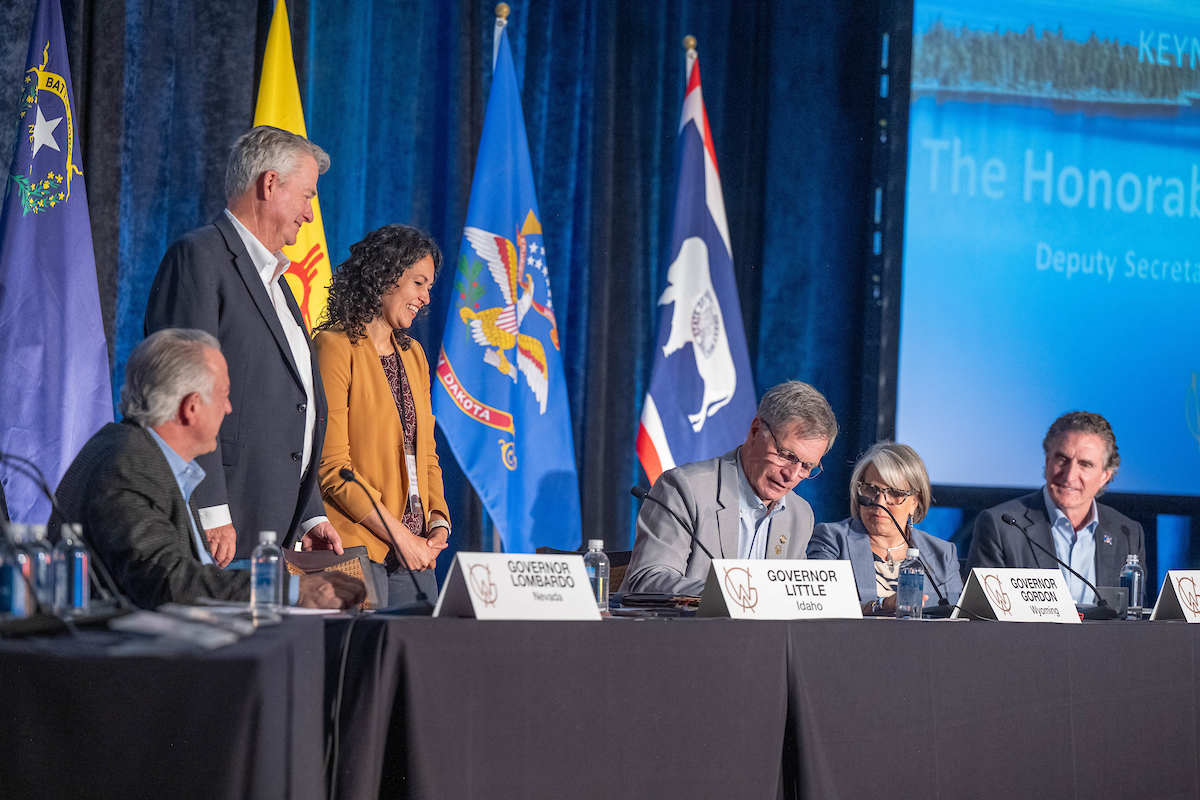 “I will forgive you if you say, ‘okay, what's the point of another MOU?’” Deputy Secretary Torres Small said. “But the one we signed today will… mark a new beginning for better integration when it comes to how forest and rangeland restoration projects are prioritized across different land ownerships. It creates new opportunities for us to work more closely with you on important issues, such as expanding rural high-speed Internet and enhancing our support for farming and ranching communities.”
“I will forgive you if you say, ‘okay, what's the point of another MOU?’” Deputy Secretary Torres Small said. “But the one we signed today will… mark a new beginning for better integration when it comes to how forest and rangeland restoration projects are prioritized across different land ownerships. It creates new opportunities for us to work more closely with you on important issues, such as expanding rural high-speed Internet and enhancing our support for farming and ranching communities.”
As part of this collaborative agreement, Deputy Secretary Torres Small announced an investment of $12 million for 22 Good Neighbor Authority projects across 13 states including Arizona, California, Idaho, Montana, Oregon, Utah, Washington, and Wyoming. She also announced $54.6 million for 41 Joint Chiefs Landscape Scale Restoration Partner projects.
The Governors further explored the topic of disaster preparedness and response during a panel discussion with experts from the Federal Emergency Management Agency, the U.S. Small Business Administration, the Nevada Division of Emergency, and McKinsey & Company.
Their discussion focused on strategies for improving state-federal coordination to more effectively mitigate or recover from disasters by simplifying assistance programs and leveraging new technologies like drones and artificial intelligence.
The critical role of technology and intergovernmental cooperation was also highlighted in a panel discussion focused on water management.
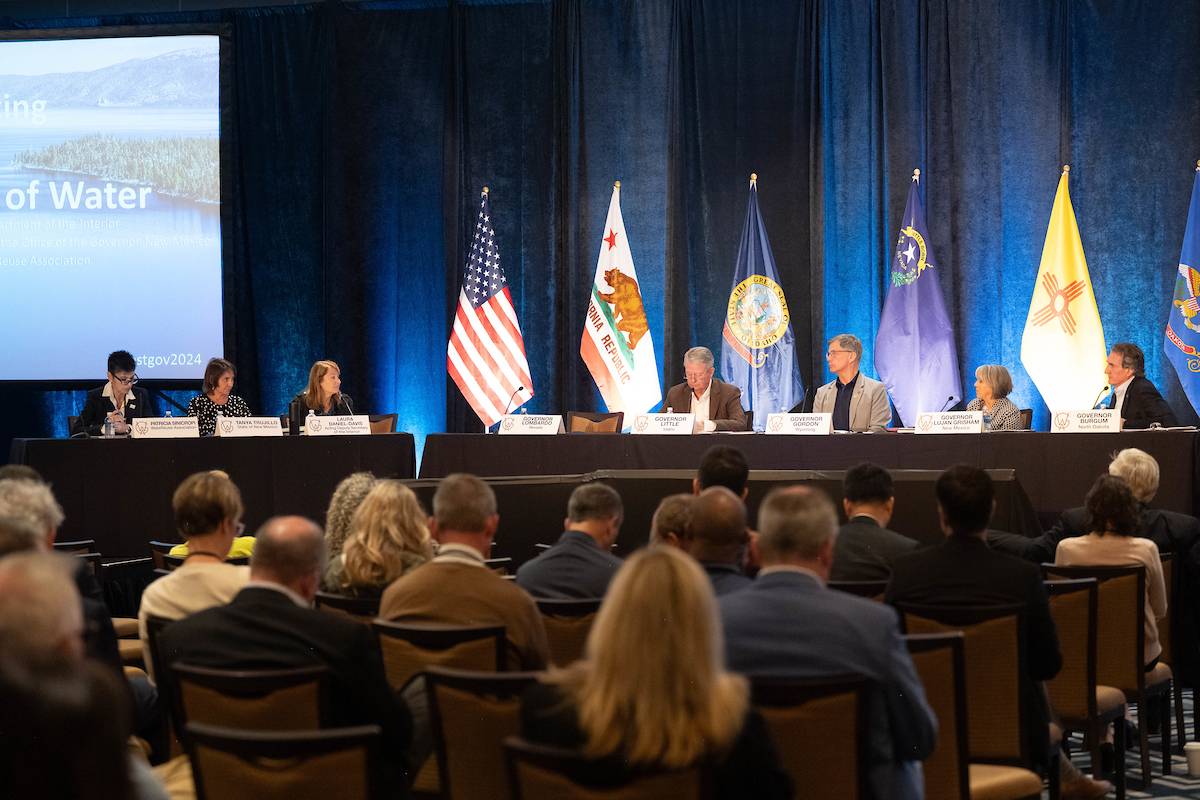 “Over the last two years, our amazing teams, your amazing teams, worked together to stabilize the [Colorado River] system,” the Acting Deputy Secretary of the Interior Laura Daniel Davis said. “Underpinning the progress that we were able to make were the hundreds of projects that are designed to conserve water resources, update water infrastructure, needed updates to get us into the 21st century.”
“Over the last two years, our amazing teams, your amazing teams, worked together to stabilize the [Colorado River] system,” the Acting Deputy Secretary of the Interior Laura Daniel Davis said. “Underpinning the progress that we were able to make were the hundreds of projects that are designed to conserve water resources, update water infrastructure, needed updates to get us into the 21st century.”
While much of the Annual Meeting was focused on environmental issues – as Governor Gordon said, "when we look at this wonderful picture of Lake Tahoe, what could be more important than to remember what our responsibilities are for our environment?" – it also included in-depth policy discussions on health care.
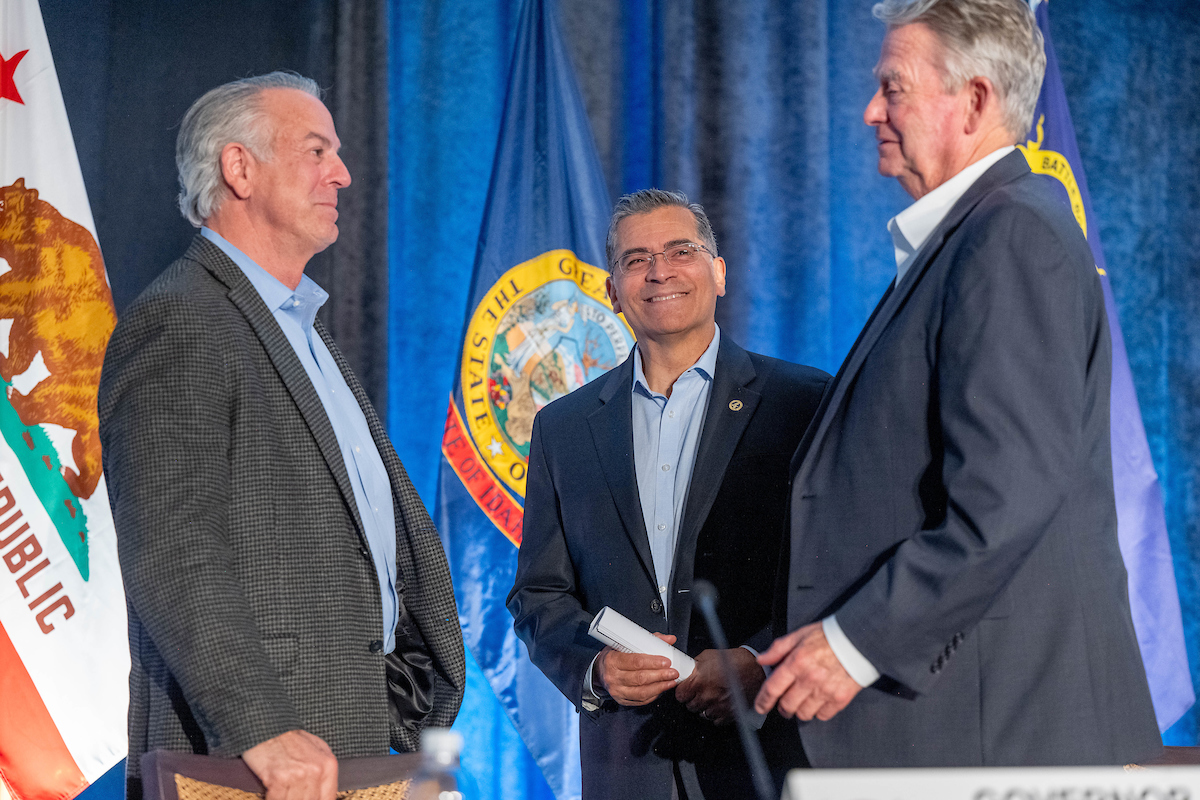 Following a keynote address from U.S. Secretary of Health and Human Services Xavier Becerra, during which he highlighted the growing dangers of avian flu, he and the Governors spoke at length about the need to better staff long-term care and skilled nursing facilities, as well as compensate home health care providers.
Following a keynote address from U.S. Secretary of Health and Human Services Xavier Becerra, during which he highlighted the growing dangers of avian flu, he and the Governors spoke at length about the need to better staff long-term care and skilled nursing facilities, as well as compensate home health care providers.
“This has been a problem for 50 years in the country,” New Mexico Governor Michelle Lujan Grisham, said. “As someone who cared for my in-laws, my parents, my sister, and total strangers, we have to do a better job in this country about recognizing the value of that care.”
The Governors also hosted a panel discussion about the inefficiencies in current funding models for addiction treatment and the integration of behavioral health with primary care – especially as it relates to the opioid crisis.
“It's important for those federal agencies and the state agencies to be demonstrating that they're working together in a unified way to integrate health care in their state,” Charles Curie, the founder and principal, of The Curie Group, said. “We see that if you integrate substance use treatment, mental health, into the primary care setting, with screening, with interventions, that you have better results.”
As with every Annual Meeting, the Governors concluded by announcing the election of a new Chair and Vice Chair.
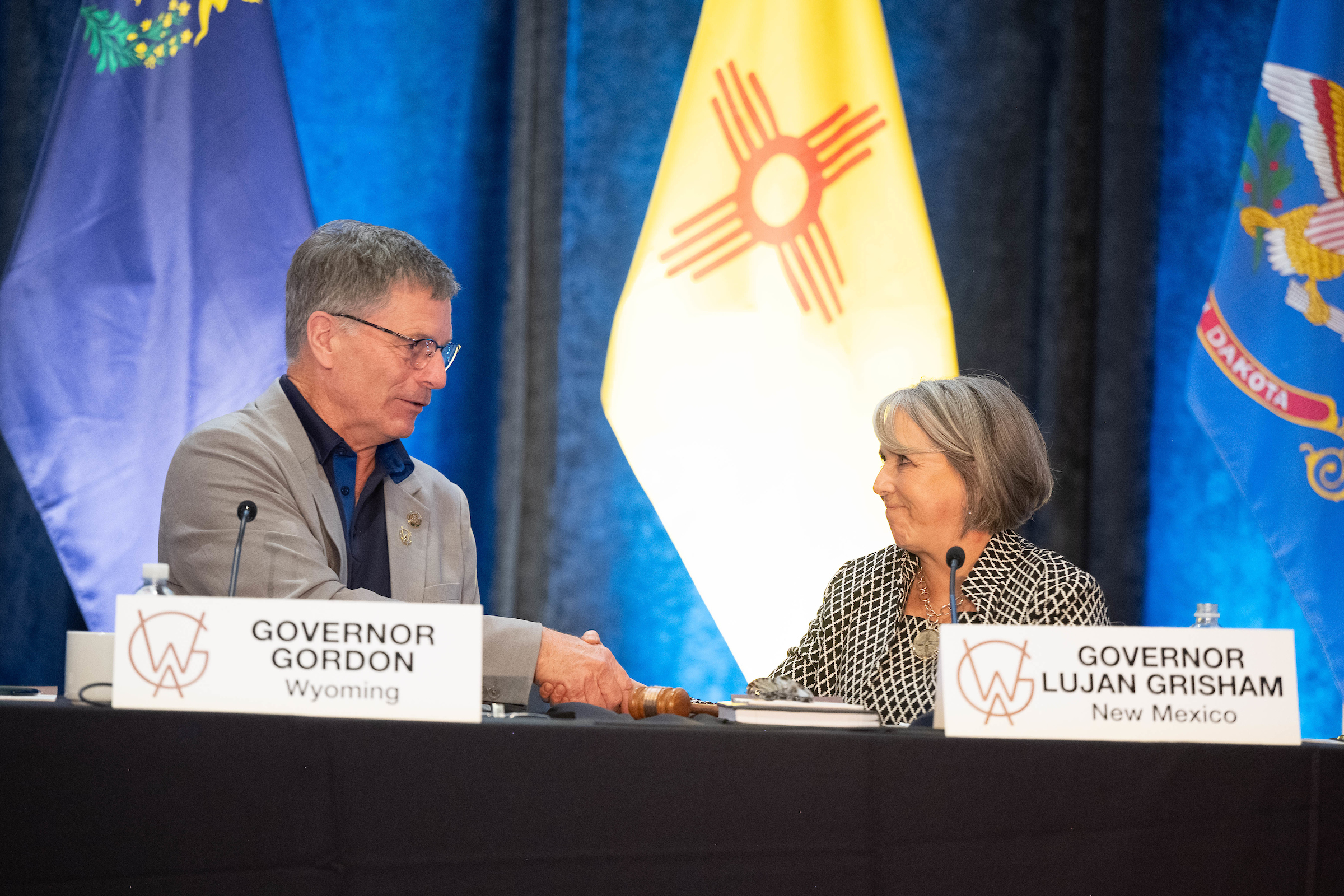 “In my last act as chair of WGA, I'm pleased to announce that Governor Michelle Lujan Grisham of New Mexico was elected to serve as chair of WGA and that Governor Spencer Cox of Utah was elected to serve as vice chair,” Governor Gordon said. “I look forward to working with you over the next year”
“In my last act as chair of WGA, I'm pleased to announce that Governor Michelle Lujan Grisham of New Mexico was elected to serve as chair of WGA and that Governor Spencer Cox of Utah was elected to serve as vice chair,” Governor Gordon said. “I look forward to working with you over the next year”
As her first act as Chair, Governor Lujan Grisham announced that she will lead a year-long policy initiative focused on housing.
“If we don't think about ways to move both local governments and use public lands, including federal lands and state lands in a meaningful way, we aren't going to be able to [solve the housing crisis],” she said. “Several Western Governors have already demonstrated incredible work, including Montana and Utah, and I know there's meaningful work going on everywhere, but my hope is to collapse all of that into best practices and literally do ribbon cuttings at some of our meetings where housing projects are being developed and made readily available in this next year.”